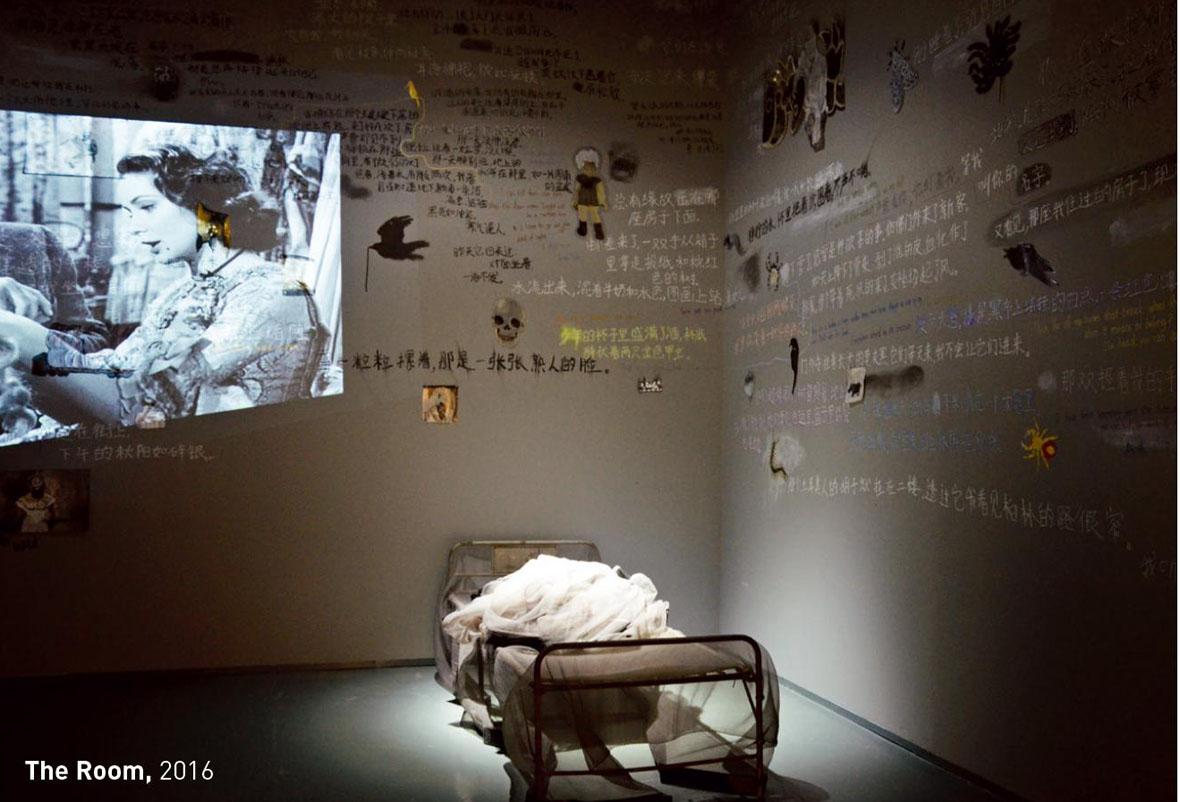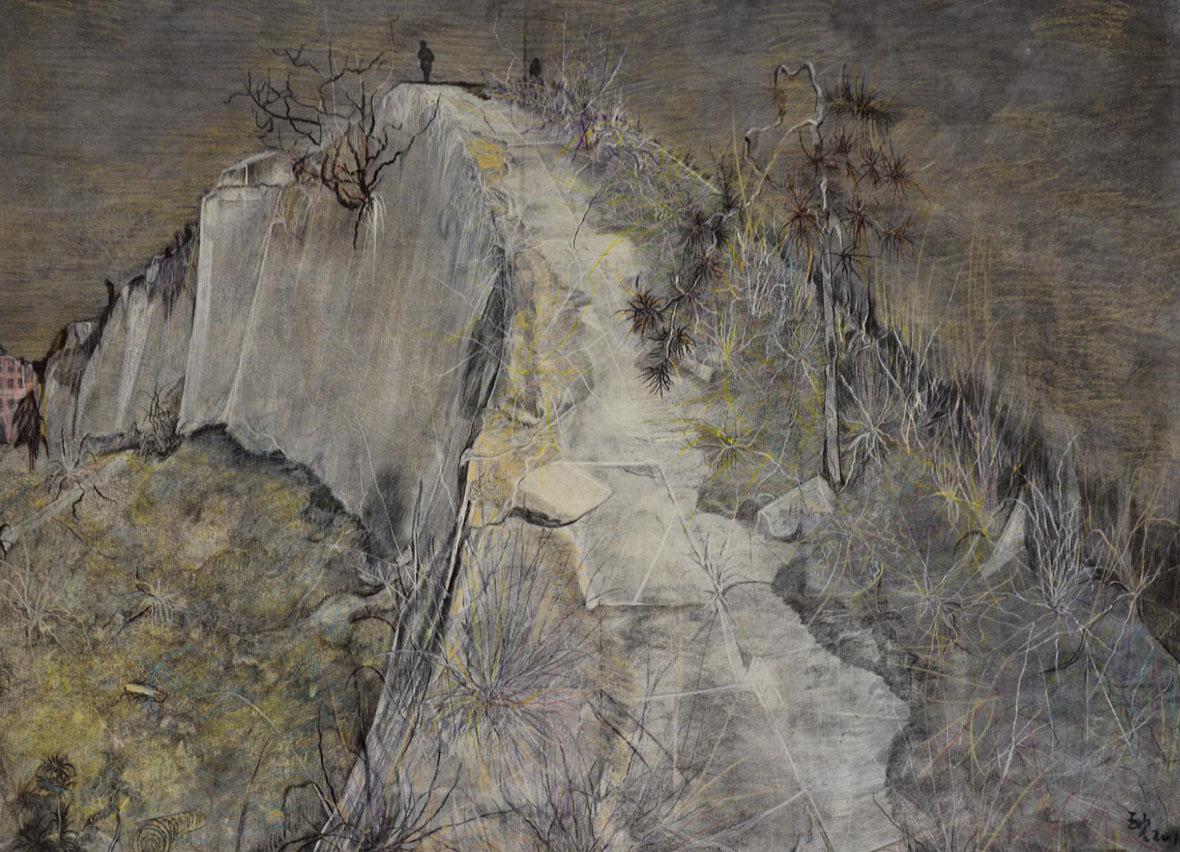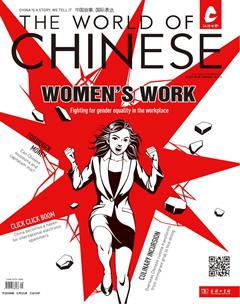Dream a little dream



Regarding your latest exhibition “Kaifeng Blues”, does “blues” refer to a depressive mental condition, or is it just a literary metaphor?
The exhibition includes my paintings from 2008 to 2016, but they are still just a small portion of my body of work. For several years, I was stuck in depression, but in general, it refers to a haunting mood of alienation that I feel about my surroundings.
Most of your paintings are on paper rather than canvas or another medium. Is that a deliberate choice?
Im obsessed with paper, its texture, color, and even its smell. Painting on paper is an old habit. Its more convenient compared to canvas, and its size is easier to manage. Among these paintings I used a smooth paper with a shiny glow. I found it by accident in Henan. Its different to rice paper in that the color doesnt show through, but leaves all traces on the surface. Its thin, but it gives out a hallucinatory shine. Using Henan-produced paper to paint places in Henan is a very intimate feeling. I think its appropriate. The paper is like a context, but it is also part of the object that Im depicting.
In the dark room at the exhibition, walls are covered in dream-like languages. Are those your dreams?
Over the last two years, I would wake up in the middle of the night halfway through my dreams, grab the phone by my pillow, type down the dream, and send it to my mailbox. When the curator Zhuzhu and I were creating this exhibition, we came up with this idea of writing something from me on the walls, and the only thing Id written were those dreams, so I dug them up. I asked my 18-year-old daughter to write them down with chalk. She agreed because I paid her ten yuan to write each line. When she finished writing, however, she was very sad. She said to me, ‘Dad, I didnt know that you were like this. It was a very emotional moment.
How do you think your works fit into the larger context of globalization?
Most of my artworks originate not from big concepts, but from very private experiences, like an impression from an old movie that Ive seen or a memory that I carry with me. More than once I have dreamed of a shabby street, and in these dreams it seems like a foreign country or Beijing. But, it is also obvious to me that it is Shangqiu or Kaifeng (both places in Henan). This, I think, is the power of ambiguity. - Li Yanting (李妍婷)
Chaos can be dull
Ma Jianfengs latest exhibition “MA” is an unprecedented, nonsensical prank.
The main hall of the gallery is stacked with piles of recycled cardboard boxes, upon which a layer of flamboyantly colored patterns, which seem to be doodled with no intentional design, has been painted. A few numbers are scattered about, obviously serving as a sort of bait for logic and rationality. And, as visitors raise their heads amid this disturbing maze of boxes, colors, and numbers, their eyes meet three fuzzy posters of...horses. No joke.
The corridor leading to the next hall is blocked by wood planks. As you navigate through, sliding past more heaps of garbage, the view suddenly opens up to what can only be described as the “artists studio”, meaning works in progress.
A ladder stands in the middle of the room while a mangled cardboard figure is balanced on top. Red flags and roosters are put together in a cart, while eggshells and a flower pot lie next to a red arrow. A blue flag leans against a wall, on which, inscribed in gold marker is the message: “blah blah blah”.
It is such a horrible mess—as if the paint buckets had exploded and these tragic little cardboard figures run out screaming because they cannot stand the unbelievable dullness. Meanwhile, red plastic stripes tied to the electric fan (as part of the exhibition) make rhythmic whooshing sounds—and even that is boring.
Its obvious that Mas new exhibition is a valiant attempt in a strange field. Yet, to make a chaotic scene of disorder and call it a search for new logic, to paint on randomly picked materials rather than canvass and call this profound, is too much.
While its hard to disapprove of Mas search for whatever questions he has in mind, his exhibition “MA” reflects a disoriented artist who has set out to search for a new order but circles back to the origins of absolute chaos. - L.Y.

